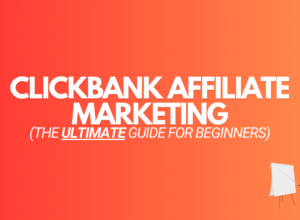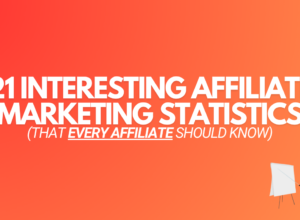If you’ve been wondering how you can do affiliate marketing without a website…
You’ve come to the right place.
Because in today’s post, that’s EXACTLY what I’ll be covering.
In fact:
I’ll be sharing 8 ways to do affiliate marketing, where a website (or a blog) is not required.
Let’s boogie…
How To Do Affiliate Marketing
(In 2024) Without A Website
1: YouTube
According to GlobalMediaInsight, YouTube has over 2 billion monthly active users:
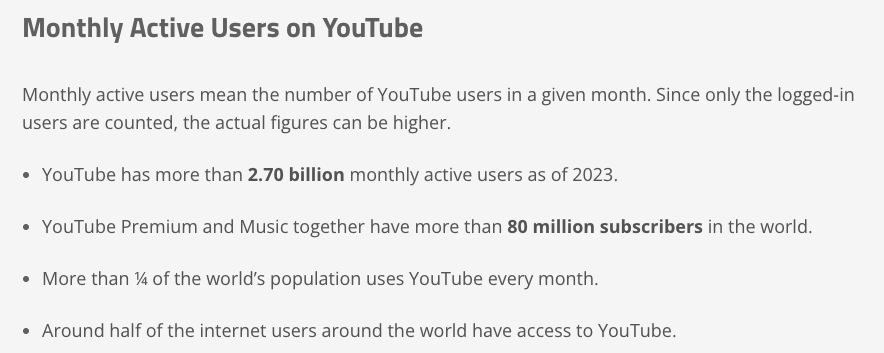
So it’s safe to say YouTube is a very popular platform, and a great opportunity for affiliate’s to promote products.
In fact:
You’ll find a lot of people on YouTube promoting products as affiliate’s, when they’re not into marketing whatsoever.
Why?
Opportunity.
For example:
I’m into woodworking, and one of the channels I follow regularly includes Amazon affiliate links in his video descriptions.
These are affiliate links to tools he uses for woodworking:

If YouTube is the route for you, here are 9 types of videos you could create:
- Product reviews. Where you review different products in your industry.
- How to videos. These are very popular, and it’s where you teach users “how to do” or “achieve” something.
- Best of videos. Simply show the best of something.
- Gaming videos. If you’re in the gaming niche, gaming videos will be perfect for you.
- Challenge videos. Like food challenges or fitness challenges.
- Educational videos. Where you educate your audience on a particular topic.
- Unboxing videos. Can you unbox products in your industry? Consider making videos of you doing so. They work great.
- Reaction videos. Where you watch videos and show yourself (on camera) reacting to videos.
- Lifestyle videos. Live an interesting life? Perhaps a lifestyle video is the video type for you.
An important note to remember when creating videos…
Make sure they’re valuable and/or entertaining to the viewer.
If there’s no value, or the video is boring, viewers will stop watching!
2: Solo Ads
A “solo ad” is an advertisement sent out to a person’s email list of subscribers.
Here’s a solo ad I wrote several years ago:
 I wrote the copy myself, and the solo ad seller then sent that ad to his email list.
I wrote the copy myself, and the solo ad seller then sent that ad to his email list.
The ad itself is an email that (usually) contains links to a marketing funnel.
You can “direct link” where you place your affiliate link within the email and directly link to your affiliate product.
However:
It’s best to have a funnel so you acquire email subscribers and build an email list of your own.
To get started with solo ads, there are solo ad platforms you can use.
Such as Udimi:
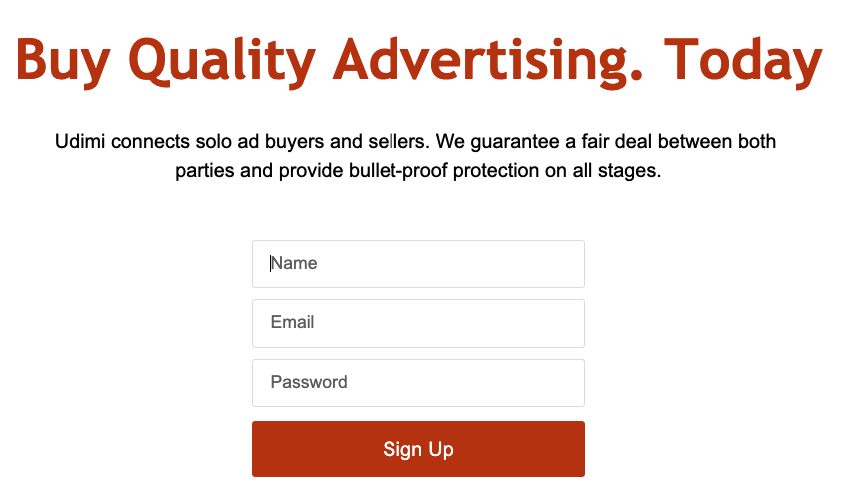
Udimi is a marketplace that connects those wanting to advertise through email (you) with sellers. (Those who have email lists.)
If you sign up through my link, you’ll get a $5 discount when you place your first ad.
3: Google PPC
You’ll usually see Google PPC ads at the top of search results.
These types of ads will say Ad on the left side of the result:
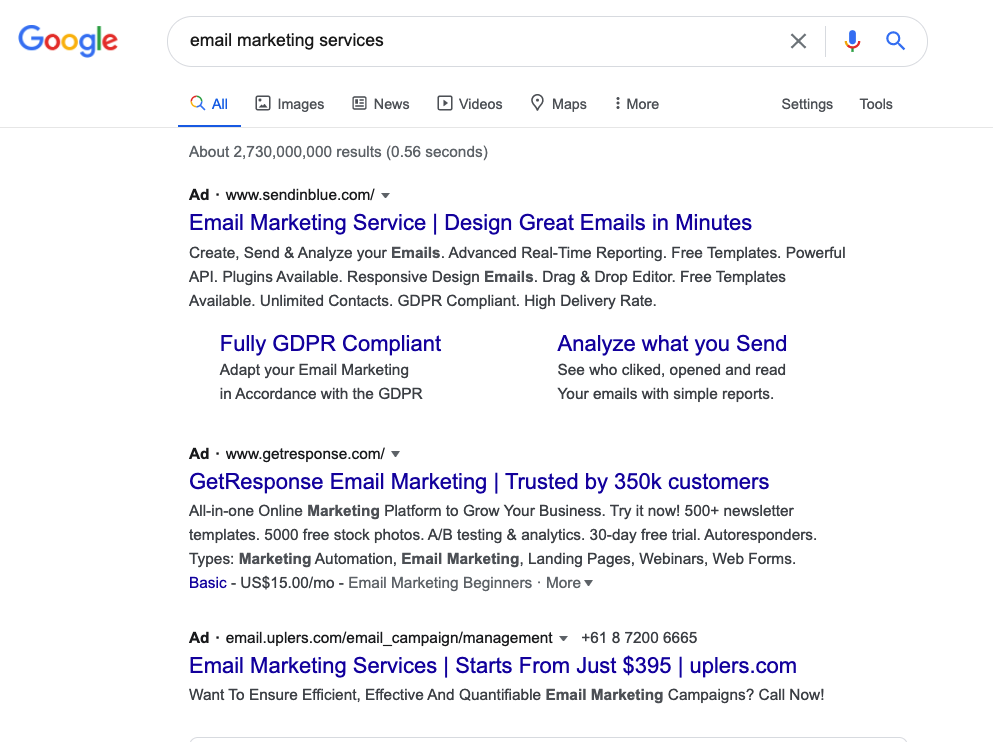
These are paid advertisements where a user (company or person) pays Google to show their ads for certain search terms in Google search.
Each time someone clicks on the ad, Google will charge the user who owns the ad.
With Google PPC, you don’t need to have your own website.
However:
You will need a “landing page.”
A landing page is a single web page used to pre-sell an affiliate product, to acquire email addresses, or both.
Here’s an example of a landing page by Google:
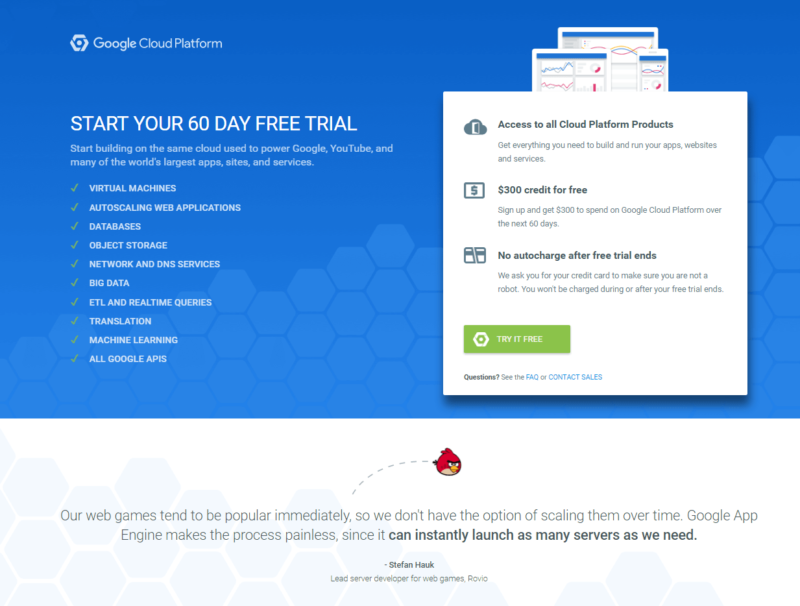
Your landing page will be the page a visitor lands on when clicking your PPC ads.
You then link out to your affiliate offer from your landing page.
Like this:

4: Social Media
There’s over 3.5 billion social media users according to Oberlo:
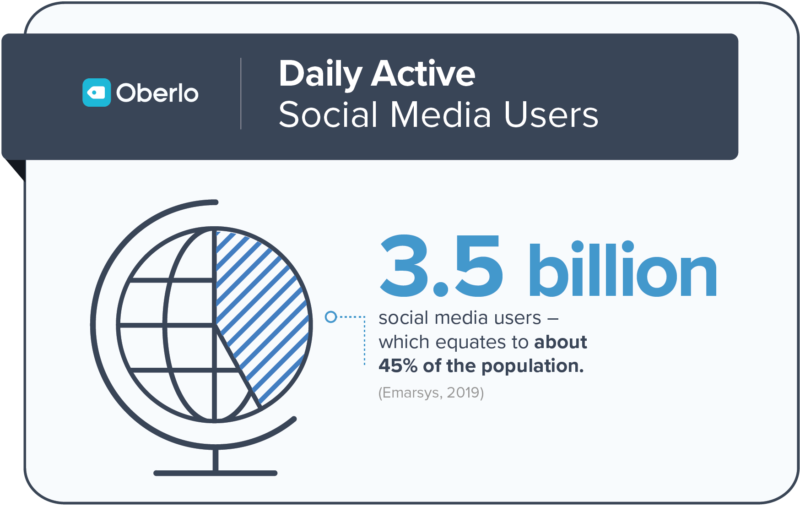
This means, there’s never been a better time to leverage social media to build up a following.
A following of people who you can pitch affiliate products to.
With a following, don’t just pitch, pitch, pitch though.
This approach will cause people to unfollow.
Instead, share content from influencers you follow, blog posts you read, or videos you watch on YouTube.
Give value and engage your followers so they’re more likely to check out products you recommend.
Here are 4 tips you can use to increase your social media following:
- Be consistent. Post content regularly and consistently.
- Speak to your market. Keep your content relevant to your markets wants and needs.
- Respond to your followers. Respond to questions or mentions by your followers so you’re engaging with your audience.
- Follow influencers and share their content. Share valuable content from influencers you think your followers will enjoy.
Be respectful and helpful to your followers.
Then when you pitch products, they’ll reward you with sales.
5: Medium
Medium is an online publishing platform where you can publish articles and grow your audience:

From technology to business, true crime to climate change, you can publish virtually any type of content on Medium.
And with 120 million readers on their platform, there’s huge potential to earn affiliate commissions within your publications.
Keep in mind, Medium is a high quality publishing platform.
So if you publish content on their platform, it needs to be high quality, helpful, and engaging.
You can’t just “slap” content together and litter it with affiliate links.
Your publication won’t be accepted.
6: Pinterest
Pinterest is an image based search engine.
You search for content, see “pins” (images) you like, click on those pins, then you’re redirected to whatever that pin is promoting.
For example:
When I search for SEO tips for beginners, Pinterest shows a whole range of pins specific to that search term:

The whole idea is to create eye catching pins that grabs a searchers attention and get’s them clicking on your pins.
You can then add affiliate links directly into your pins, so when a searcher clicks your pin, they’re redirected to your affiliate offer.
And creating great looking pins is easy thanks to Canva:

Canva is free, and easy to use.
Furthermore:
They have pre-built templates you can use, so you can get pins created in a heart beat.
When you create a pin, you want to create multiple versions of EVERY pin you create.
For example:

These are some of my own pins that link out to different posts here on my blog.
I always create multiple versions with different hooks, images, and colors.
Then I’ll check my stats in Pinterest to see which version performs the best.
Pinterest also encourages a lot of pinning.
That means you can make lot’s of different pins for different affiliate products, and pin all day long.
However:
This can take up a lot of your time having to manually pin a bunch of different pins all the time.
Thankfully, there’s a tool you can use to automate the pinning process known as Tailwind:
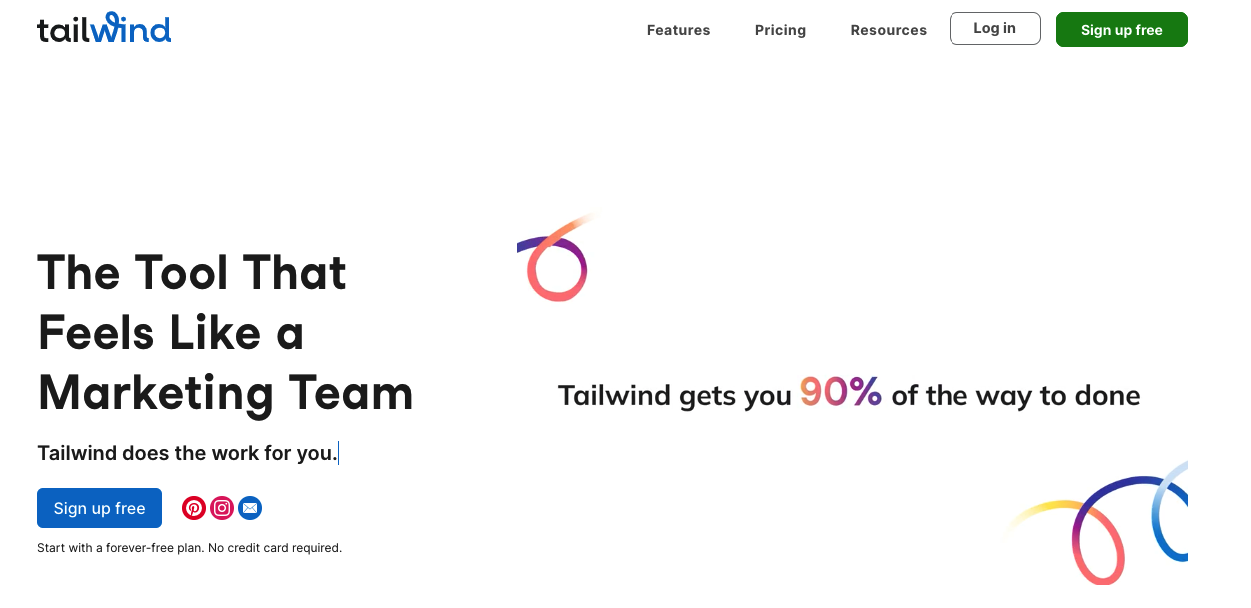
7: Forums
Forums bring like minded people together.
And for affiliate’s, it’s a great place to promote affiliate products.
Keep in mind, you can’t just promote all the time.
This approach will not work.
Instead, you want to be a genuine participant in the forum discussions and provide value to other members.
You do this AND promote affiliate products at the same time.
Finding forums is quick and easy too.
Simply do a Google search for “your niche + forums.”
For example:
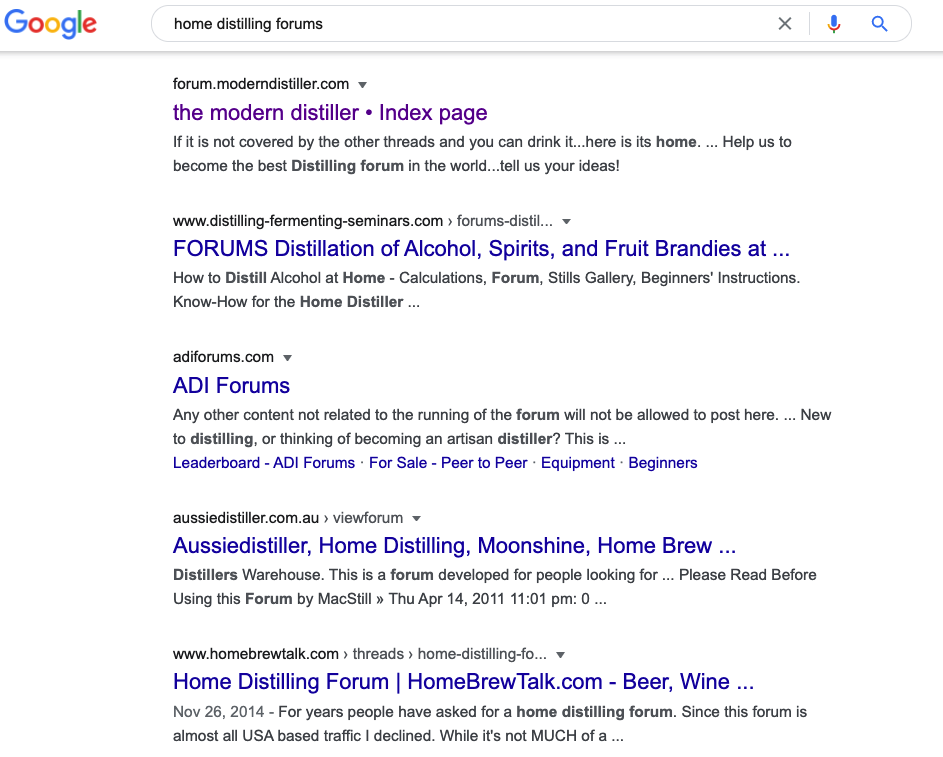
You’ll then want to join several forums and become an active (helpful) member.
This builds up trust and rapport with other members, which you need if you want them to buy from you.
8: Facebook PPC
Facebook PPC is similar to Google PPC.
These are ads where you’re charged a set amount anytime your ad is clicked.
You’ll see these all the time throughout your Facebook feed.
The ads will say Sponsored at the top of the ad:

These types of ads work best when you send the traffic to an affiliate funnel.
Because most people won’t buy when you directly advertise a product.
With a funnel, you build an email list, where you can then market affiliate products to that list via email marketing.
Recap Of How To Do Affiliate Marketing
(In 2024) Without A Website
1: Use YouTube
2: Send solo ads
3: Use Google PPC
4: Try social media
5: Try Medium
6: Leverage Pinterest
7: Use forums
8: Try Facebook PPC
Conclusion
As you can see, affiliate marketing can definitely be done without a website.
However:
If you’re doing any kind of paid advertising, such as solo ads or PPC, it’s always best to send the traffic to a marketing funnel.
Because most of the traffic won’t buy right away.
But if you collect email addresses, you can follow up with those users (over time) and eventually sell them on your affiliate products.
This is a strategic approach that’ll make you way more money.
Now, over to you…
“Did you find these tips helpful?”
Leave a comment and let me know.
I’d love to hear from you!
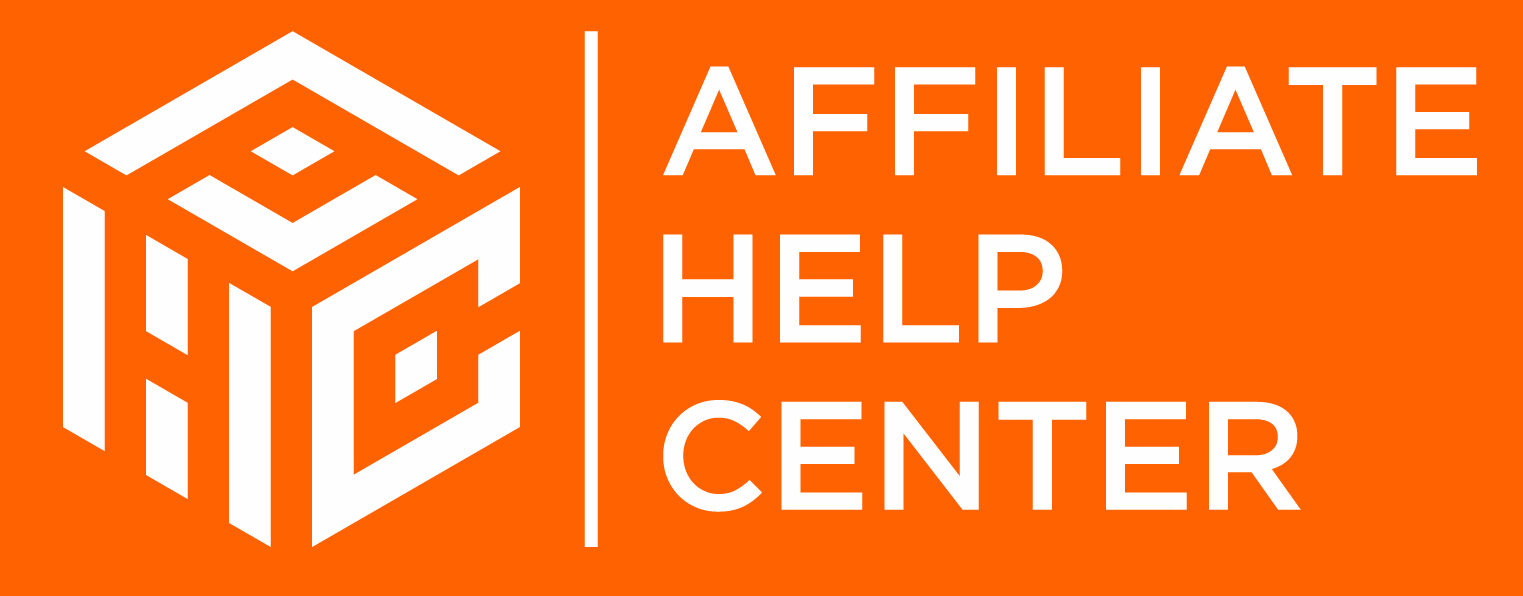
![You are currently viewing How to Do Affiliate Marketing Without a Website [2024]](https://ahc-1cde4.kxcdn.com/wp-content/uploads/2020/05/How-to-do-affiliate-marketing-without-a-website.png)
